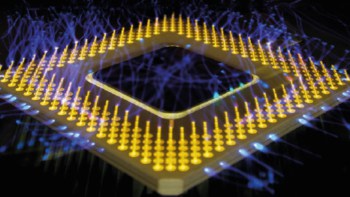Magnetoresistance is the change in the electrical resistance of a material when it is put in a magnetic field. Condensed-matter physicists have long known that the magnetoresistance of a device is made up of a physical contribution that depends on its intrinsic properties, such as carrier concentration and mobility, and a geometric contribution that depends on its shape, and on the size and location of the electrical contacts. Usually the physical magnetoresistance dominates, but our group at NEC has recently shown that the geometric effects can give rise to an unusually large or “extraordinary” magnetoresistance in inhomogenous non-magnetic structures formed from gold and a semiconductor, such as indium antimonide.
At room temperature, the extraordinary magnetoresistance of such non-magnetic materials is much larger than that of other magnetic materials, including those that exhibit giant or colossal magnetoresistance. Now Joseph Heremans and co-workers at Delphi Research Laboratories in Michigan, US, have shown that there can also be a significant geometric contribution to the so-called magnetothermopower of indium antimonide (J P Heremans et al. 2001 Phys. Rev. Lett. 86 2098).
In the June issue of Physics World, Stuart A Solin of the NEC Research Institute, US, explains the new effect.


